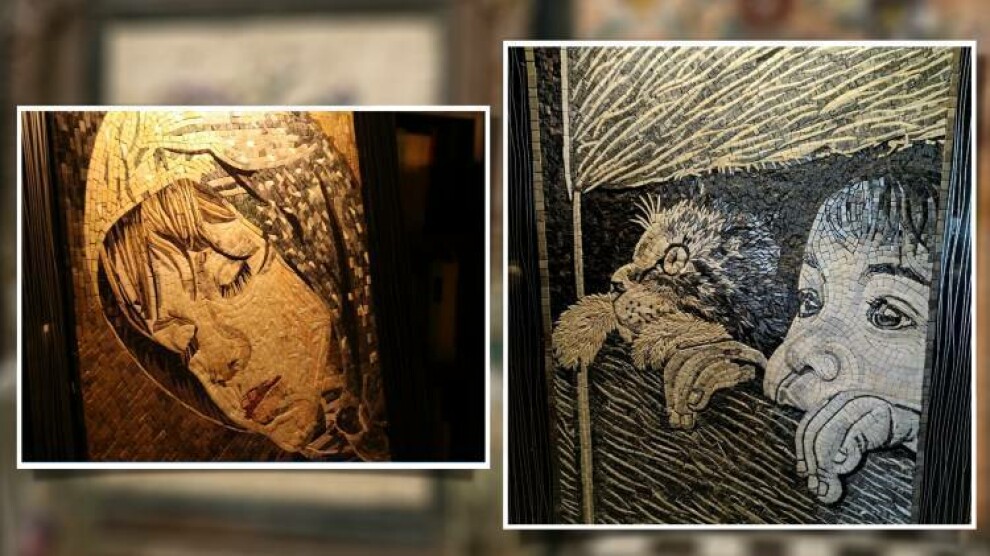Mosaic art kept alive in Idlib by women
Women have played an important role in preserving cultures since the beginning. In Idlib, mosaic art has been kept alive by women, who love art and have artistic sensibility. This art decorates the houses in Idlib with natural and creative colors.

Women have played an important role in preserving cultures since the beginning. In Idlib, mosaic art has been kept alive by women, who love art and have artistic sensibility. This art decorates the houses in Idlib with natural and creative colors.
LÎNA EL-XETÎB
Idlib-Mosaic art pieces are almost seen all across the city of Idlib and are a source of livelihood for many families, particularly for women. This art is created by painting geometric, plant, or animal shapes on marble stones to decorate houses, halls, and workshops.
“We turn stones into living museums by combining contemporary heritage with authentic art. I combine colored stones on this table to create a beautiful mosaic piece,” 29-year-old Sada Al-Nacar, who practices this art, said.
“This art requires skill and patience”
Sada El-Neca, who lives in the village of Atma, north of Idlib, has made decorative mosaics for five years in order to make a living for herself and her sick mother. “I enjoy making mosaics. This art requires skill, patience, and experience,” she told JINHA.
Sada El-Neca needs scissors to cut down large pieces of marble stones and adhesives to hold the marble pieces together on the painting. There are more than 10,000 pieces of marble on a square meter.
She shapes thousands of stones
Sada El-Neca told us the preparation stages of the decorative mosaics as follows:
“First, I print my design and then I put a piece of transparent nylon and fiber on the design. After I cut down large pieces of marble stones by using a cutter, I adhere the pieces to the base.”
A great art
Sada El-Necar stated that completing a decorative mosaic takes five-seven days depending on the type and size of the pieces. “Some people ask me to use small pieces of clay or glass,” she said.
She teaches this art
Leyan El-Salum (33) both makes mosaic art and teaches other women how they can make this art. “I teach this art to women so that they can make and sell mosaics to improve their living conditions and keep alive this art.”
She complains about the high prices of materials
Speaking about the challenges she faces in making mosaics, Leyan El-Salum said, “One of the challenges I have faced is the high prices of the materials. The ongoing war also prevents us from holding exhibitions.”
She makes a living by selling decorative mosaics
Samira El-Hosari (33) lost her husband in 2009. She now has to take care of her four children alone. “I decided to learn this art to make a living for my family. I make mosaics at home while looking after my children.”
“Mosaic art is an ancient art in Idlib”
41-year-old Siham El-Etar lives in the Sarmada town of Idlib. She stated that she makes mosaic paintings expressing beauty and creativity and that she loves this art and decorates her house with this art. “Mosaic art is an ancient art in Idlib. I love decorating my home with mosaics because they look beautiful.”
Many women living in Idlib make mosaic art to make a living and keep this art alive.
